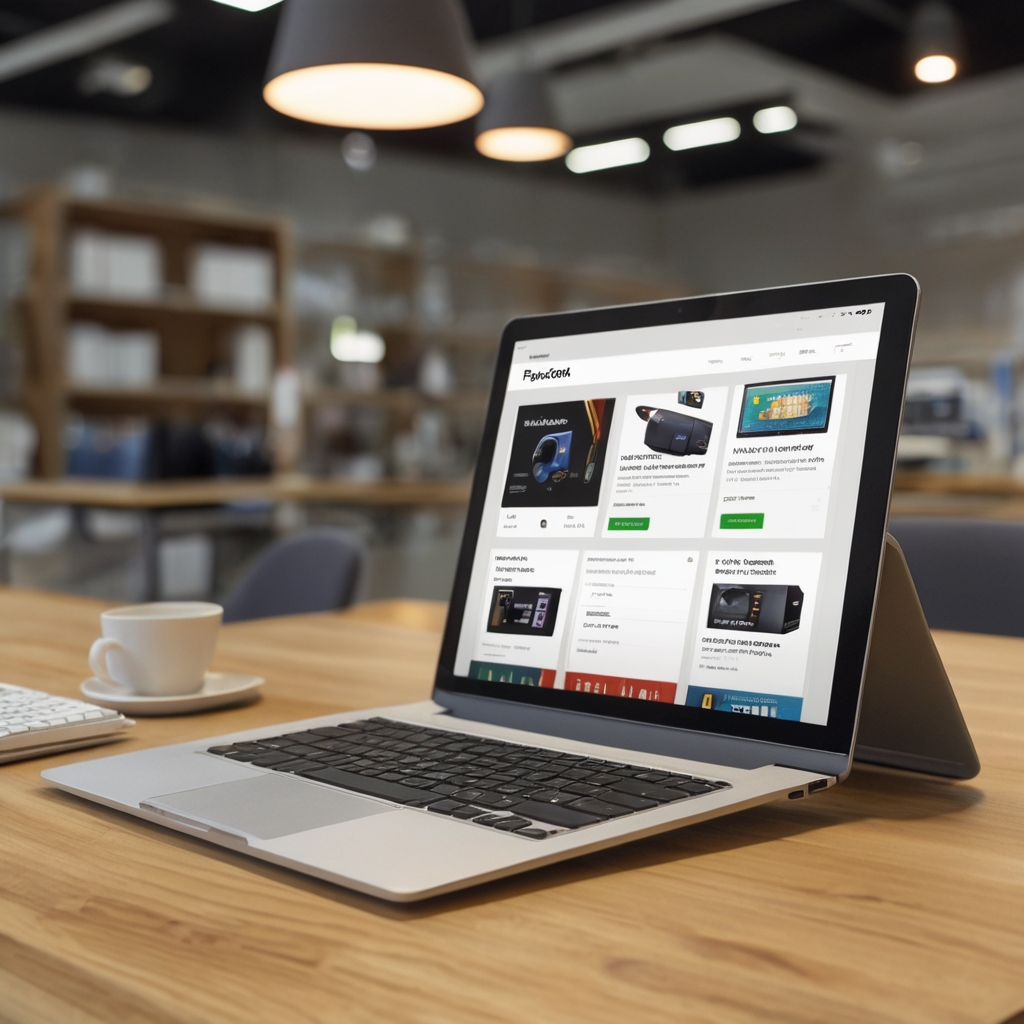In today’s era, e-commerce plays a crucial role in retail, and personalization is key to success. Online stores must continuously tailor their offerings to the needs and preferences of customers to increase conversion rates and cart value.
Below, we will discuss step by step a hypothetical project to implement an advanced recommendation system in an electronics store, which could significantly improve sales metrics and the customer shopping experience.
Problem Description and Project Objective
Business Context
An online store specializing in electronics (laptops, smartphones, TVs, and accessories) observed that many customers were leaving the site without making a purchase. Despite a wide range of products, users struggled to find items that suited their needs. As a result, the conversion rates and average cart value were lower than expected, negatively impacting the store’s revenue and profitability.
Project Goals
The project aimed to develop and implement an advanced recommendation system to:
- Personalize product listings on category pages to present products most aligned with users’ preferences and browsing history.
- Introduce product recommendations on main pages and product subpages, suggesting items based on previous purchases and site behavior.
- Segment users according to their shopping behaviors and preferences, allowing for better-targeted offers and marketing campaigns.
Expected Outcomes:
- Increase the conversion rate by 15% within the first 6 months.
- Raise the average cart value by 10%.
- Improve overall customer shopping experience, leading to greater loyalty and more frequent returns to the store.
Data Preparation
Data Sources
The project utilized various data sources crucial for the successful implementation of the recommendation system:
- Purchase History
A CSV file containing the purchase history of users over a two-year period. The data included product information, purchase dates, prices, and product categories. - Product Feed
A regularly updated product feed from the store’s API, containing detailed information on available products (names, descriptions, prices, availability, technical attributes, and categories). - Eventserver
The Eventserver collected data from the online store and stored it in a dedicated database. The events collected included product views (about 100 million records), clicks (about 1 million records), cart additions, and purchases (about 100 thousand records).
Data Quality
To ensure data quality, actions were taken to:
- Data Completeness: Integrating and normalizing data from various sources (CSV, API, eventserver).
- Data Cleansing: Removing duplicates, filling in missing values, and correcting errors.
Data Preparation and Processing
Before building the recommendation system, several actions were taken to gain valuable business insights:
- Data Integration: Data from different sources were integrated into a unified processing system, allowing the combination of product information with purchase history and user behaviors.
- User Segmentation: Users were assigned to segments based on their shopping behaviors and preferences (e.g., tech enthusiasts, deal seekers, premium customers).
- Behavior Analysis: The collected data allowed for the analysis of user behavior on the site, identification of the most viewed and purchased products, and determination of shopping patterns.
Implementation and Integration
Technologies and Tools
The implementation of the recommendation system utilized various models and artificial intelligence technologies:
- Embeddings with OpenAI: Transforming product descriptions and user reviews into numerical format.
- XGBoost: A predictive model for determining which products are most likely to be purchased.

- SHAP: A tool for interpreting model results, helping to understand which user characteristics most influence the recommendation model’s decisions.
Integration with Existing Systems:
- E-commerce Platform Integration: The recommendation system was directly integrated with the store’s e-commerce platform, AtomStore, allowing real-time recommendation display.
- API: Enabled dynamic retrieval of product and user data and sending generated recommendations to the store’s frontend.
- Eventserver: Collected data on user activities, ensuring the continuous updating of recommendation models.
Results Achieved
After the system was implemented, A/B tests were conducted. The recommendation system returned its results for 50% of randomly selected users, while the rest received the usual product order (by popularity). This allowed for precise measurement of the model’s quality.
- Increase in Average Cart Value
Thanks to recommended upsells, the average cart value increased by 4%. The comparison was made during two weeks of A/B testing. Assuming the average cart value before implementation was 500 PLN and there were 10,000 purchases per month, the monthly profit from this increase amounted to 200,000 PLN. - Increase in CR on the Website
Users received more tailored product suggestions, leading to fewer site exits and more frequent purchases. The conversion rate (CR) increased by 4%, resulting in 800 additional monthly conversions and a profit of 416,000 PLN.
Costs and Resources
The main costs of the project were the wages of the development team.
Human Resources
- Data Scientists: Three Data Scientists, with a total team cost of 300,000 PLN.
- Project Manager: PM part-time, included in the overall team cost.
Project Duration: 2 months.
Infrastructure Costs
As the entire system was implemented in the cloud, additional costs included:
- AWS EC2 Instances: Training model costs (2500 PLN) and deployment (450 PLN).
- S3 Storage: Data storage costs (360 PLN).
- Amazon RDS: Database storage costs (560 PLN).
Total Project Cost: 303,870 PLN.
Thus, the investment paid off two weeks after the solution was implemented.
Monitoring and Optimization
After implementing the machine learning model, it was crucial to monitor its performance and make necessary adjustments.
Monitoring was implemented using Amazon CloudWatch. Due to the introduction of new products and changing user preferences, automatic weekly model retraining was implemented. Additionally, an alert system was introduced to report anomalies.
Feedback Loop
For each recommended product, users could click a thumbs up or down to rate the recommendation’s quality. This provided an additional source of information useful for retraining the AI model.
Conclusion
The hypothetical implementation of an advanced recommendation system in an electronics store was a key step in improving customer shopping experiences and increasing sales efficiency.
By personalizing the product offering based on user preferences, noticeable improvements were achieved in conversion rates and average cart value.
The project required integrating data from various sources and applying advanced machine learning technologies, such as XGBoost, which enabled effective processing and analysis of large volumes of data and generating accurate product recommendations in real-time.
Interested in a similar solution? Contact us.







